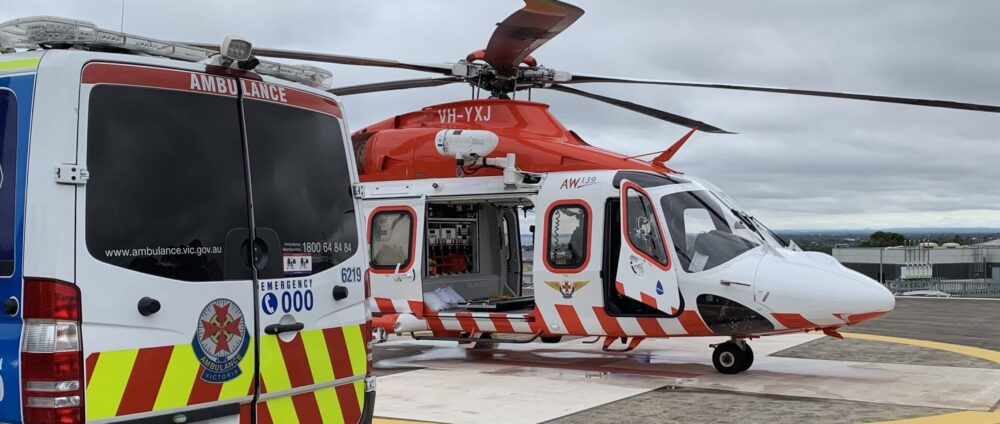Neurological assessment for paramedics primarily focuses on the level of consciousness and pupil reflexes. Although there are some specialised assessments (such as stroke screen, meningeal signs) these will be covered under their relevant topics.
Glasgow Coma Scale (GCS)
Reference: CPG A0104 Conscious State Assessment
The most often used assessment of conscious state, the GCS was designed for use with head injured patients in an attempt to identify severity of injury and likelihood of recovery. Unfortunately the GCS is not particularly good at this, nor does it have good interrater reliability (that is, two people assessing the same patient are likely to reach different scores). However, it is a commonly used, widely understood assessment – and since there is nothing better, we continue to use it to this day.

Points to consider:
- GCS is usually expressed as the sum of all the parts (ie. scored out of 15). However providing a breakdown is usually more beneficial. This is usually expressed as “GCS 8 – eyes 1, verbal 2, motor 5”
- Patients should be scored on their best effort – for example, a stroke patient who can only obey commands with one side of their body should receive a score of 6 for motor response.
- Orientation questions should ask about the patient (name, date of birth, address etc), time (day of week, month, year) and place. Note that asking questions such as “who am I?” are not helpful as the patient can probably read your name badge.
- Painful stimuli should only be applied after assessing for spontaneous movement and giving a verbal prompt. Appropriate painful stimuli include trapezius squeeze or nail bed pressure. Sternal rub or supraorbital pressure are generally frowned upon.
- Low GCS in isolation does not indicate the need for intubation – assessment of airway, breathing and other vital signs should be used to form a comprehensive picture
- There is a paediatric GCS assessment, where the verbal response ‘orientated’ is instead ‘appropriate words/social smile’ for children ≤ 4 years. However in reality AVPU is more suitable for children
AVPU
Reference: CPG A0104 Conscious State Assessment
AVPU is a much more simplified approach to conscious state, but does not include the nuance of GCS. However, for most paramedic practice AVPU will suffice.

Points to consider:
- AVPU is a quicker, easier assessment of conscious state compared to GCS, as it can be observed without asking the patient’s questions
- It may be more appropriate to assess AVPU in patients unable to speak, such as those with facial injuries, stroke or non-English speaking background
Pupil Assessment
Pupil assessment is a simple, non-invasive assessment that can provide clues about the patient’s brain function. Generally pupil assessment accompanies a GCS assessment, although it may be performed more frequently in patients with a head injury or observed pupil abnormality.
Procedure:
- Hand hygiene
- Explain procedure to patient and gain consent
- Prepare the environment – dim lighting is preferred during pupil assessment
- Gather equipment – pen torch
Avoid using bright lights such as torches or phone lights, as this can cause discomfort - Before starting, observe if there are any baseline abnormalities in pupil size or shape
- Starting from the lateral side of the eye, shine the light into one eye
- Observe for pupil reaction to light
- The pupil should quickly constrict when exposed to light and dilate when light is removed. This is known as direct response
- Assess the opposite pupil for consensual constriction and dilation (that is, the right pupil changes when light is shone into the left eye)
- Repeat assessment on the opposite eye and document
Normal finding:
Both pupils will constrict when exposed to light, and dilate when the light is removed. At rest they should be similar shape and size. This will usually be documented by the acronym PEARL – pupils equal and reactive to light.
Abnormal findings:
- Anisocoria (unequal pupils) – occurs normally in about 20% of people, however the pupils should be no more than 1mm in difference. Larger difference than this may indicate oculomotor nerve damage, such as in severe head injury.
- Unilateral unreactive pupil – can indicate serious brain injury
- Bilateral unreactive pupils – serious brain injury, death
- Bilateral dilated pupils – stimulant drugs, tricyclic anti-depressants
- Bilateral constricted pupils (pinpoint) – opiate drugs, organophosphates
Further reading
https://www.eyenews.uk.com/education/trainees/post/the-assessment-of-pupils-and-pupillary-reactions
Bottom Line
Basic neurological assessment should be undertaken in every patient, even when they’re not obviously altered. An incidental finding of mild confusion may impact the patient long term. Pupils should be looked at as part of your GCS, particularly if there is suspicion of head trauma or stroke.
